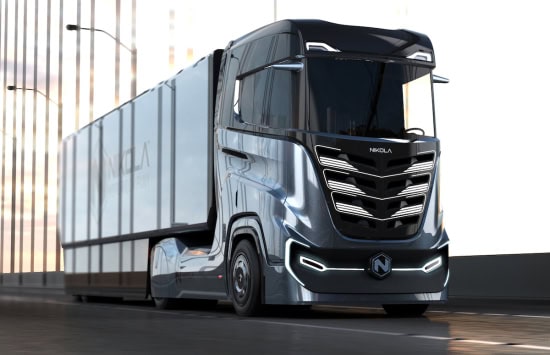
The battery-electric trucks will be available in 500 kWh, 750 kWh and 1,000 kWh configurations. The company is positioning the all-battery versions for short haul, while the hydrogen fuel cell versions are targeted for long haul.
The Nikola One will, for the moment, remain hydrogen only, as it is targeted for long-haul operations, being equipped with a sleeper cab.
Nikola went on to emphasize that the hydrogen trucks are 5,000 lbs lighter than the battery-electric trucks, and cheaper for long haul applications even with current hydrogen costs. Nikola positions battery-electric for inner cities and non-weight-sensitive applications.
We will see 50:1 more hydrogen orders but [for] some applications BEV works great.—Nikola tweet
As a comparison between the two powertrains, Nikola said that:
- A battery-electric truck at 80,000 lbs uses ~ 2.25 kWh per mile in real weather and normal hills on routes. A 1 MWh configuration (1,000 kWh) will support a range of about 400 miles, with 90% of the battery being usable. In cold weather, that will drop to 300 miles. A 1MWh pack will used 69,000 21700 cells.
- The fuel cell version of the 80,000lb truck requires the same 2.25 kWh/mile as the battery version, and will get around 7-10 miles per kg H2. The weight of the fuel cell system is about 3,000 – 5,000 lbs less than that of the battery system.
ICE is enemy, not hydrogen or BEV.
